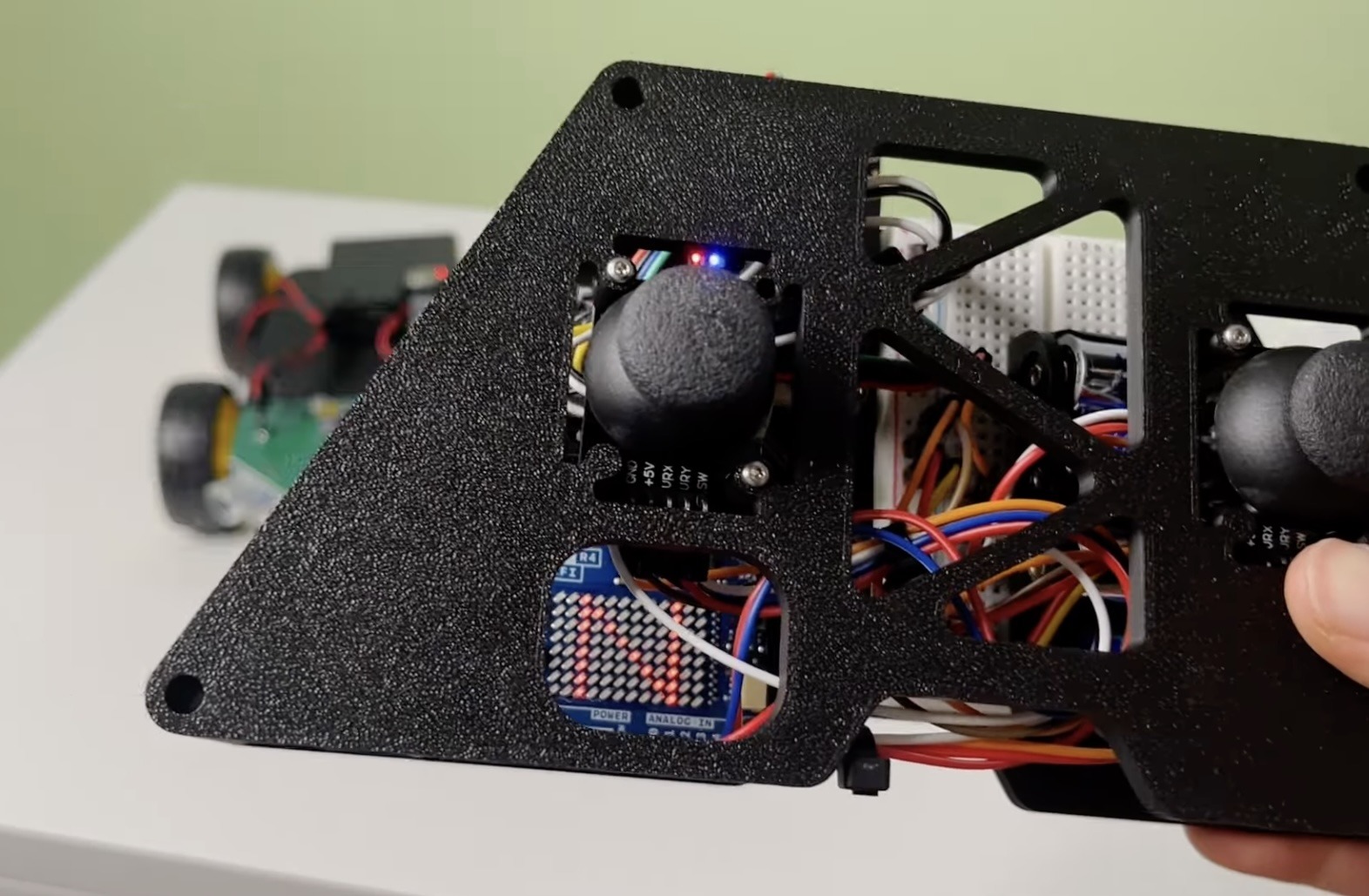The whole point of a robot is that it can operate without direct control input from an operator.Except there are many exceptions and it isn’t uncommon for roboticists and operators to require direct control.The Tinkering Techie needed to add that capability to his rover robot and built his own Wi-Fi controller that also accepts voice commands.
Conventional remote control (RC) vehicles communicate through analog radio.But it is becoming increasingly common to use Wi-Fi instead, because it allows for a lot of data transmission and Wi-Fi is now usually available in most indoor locations (ad hoc is common, too).Makers can also take advantage of development boards that have built-in Wi-Fi connectivity.
In this case, The Tinkering Techie turned to the Arduino UNO R4 WiFi and a generic ESP8266 dev board acting as a WiFi adapter for an Arduino Nano. The UNO R4 WiFi is in the controller and is the server.The ESP8266 board is on the robot and connects to that server through a router to retrieve commands.Once it finds a command, such as “turn right 90 degrees,” it passes that along to the Nano that controls the robot’s motors and monitors its sensors.
The controller has a pair of joysticks so The Tinkering Techie can pilot the robot like an RC car.But it also has a DFRobot Gravity Offline Language Learning Voice Recognition Sensor.That has 121 pre-programmed voice commands and also supports 17 custom commands.
Using those, The Tinkering Techie was able to make the robot respond to verbal instructions, like “turn right 90 degrees.”

